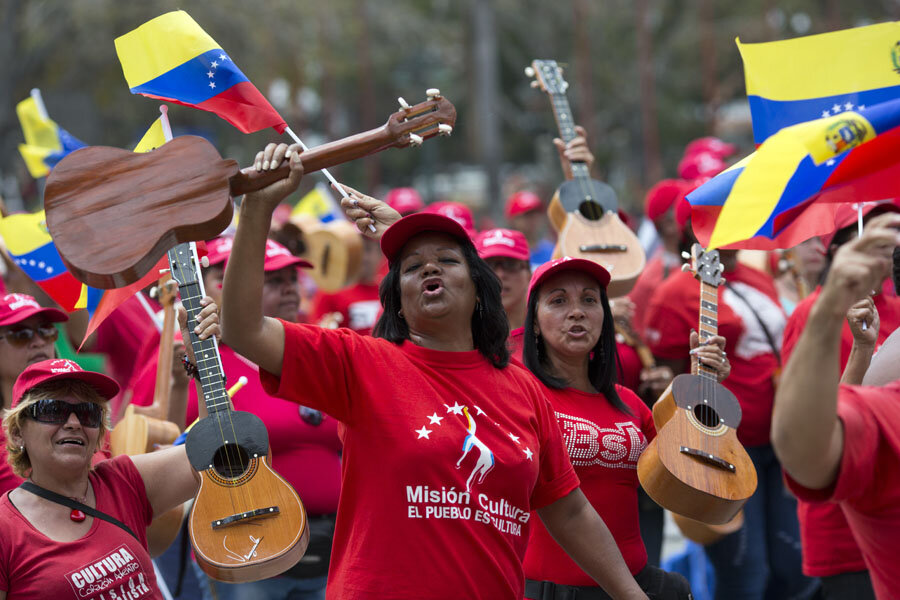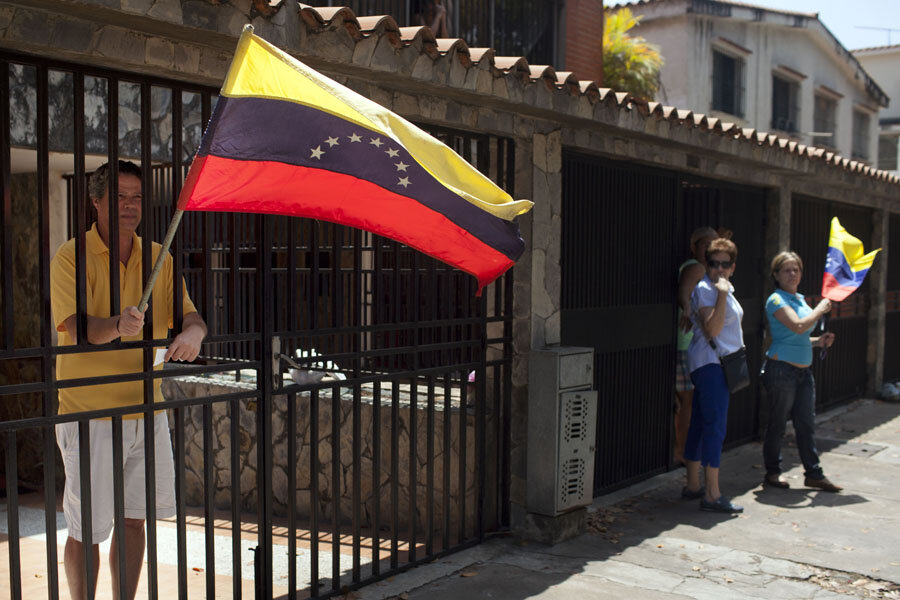Venezuela's 'color revolution?' The complexity of wearing red.
Loading...
| San Cristóbal, Venezuela
The color red sets off alarm bells these days in this western Venezuelan city, where antigovernment protests sparked nationwide demonstrations that have endured since early February.
Save for the red stripe on the Venezuelan flag, which also has yellow and blue, here anything of that color looks suspiciously allusive to the late president Hugo Chávez, who popularized red among his supporters as the official color of his self-styled “Bolivarian” revolution.
In this bastion of anti-Chavismo, however, it puts protesters on alert.
As I wandered on a recent afternoon from barricade to barricade along Carabobo Avenue, a normally busy road that has been choked off from traffic for a month by protesters, I caught the eye of a young man with an air of authority. He was one of the leaders of the student-organized protests. “Are you with the press?” he asked tensely, glancing at the press credentials hanging from my neck. “Do you mind if I look?”
I showed him the credentials and he relaxed. There’s no problem, he assured me. It was just that the lanyard on my press card happened to be red and he thought I was with one of the government media outlets, whose reporters, the opposition says, often spy on their movement.
“Hopefully soon we will all be able to wear red again,” he said, alluding to stripping the color of its political tinge.
As the protests continue here, the opposition is becoming more radicalized. But for now, most analysts agree, there is little chance that the government of President Nicolás Maduro – Chavez’s hand-picked successor – will be changing its colors any time soon.









